This Webpage Title
Japan - Festivals

| About the Country |
|---|

Here are some great photos of Japanese festivals and celebrations!
![]()


 Japanese New Year
Japanese New Year
This is the most celebrated holiday in Japan and during the first few days of the new year you'll find all shops will shut down tight.
While in North America people spend Christmas with their families and whoop it up New Year's, in Japan it's (just like for nearly everything else) exactly the opposite. TV is dull, dull, dull.
Shops are closed. Videos rental shelves (for those that are open) are raped and empty. Streets are deserted. Until recently up to 10% of the whole population of Japan would celebrate the Japanese New Year by running like hell to the airport and getting out of the country. Millions still do though, since Japanese are given extremely few chances to go abroad in the year, the Japanese festivals are quiet and dull, and escaping the bitter cold of the season is a nice idea. For those that don't leave though, here are a few pics of what they do.
Osechi Ryouri -- New Year's Cooking
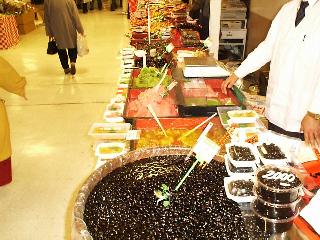
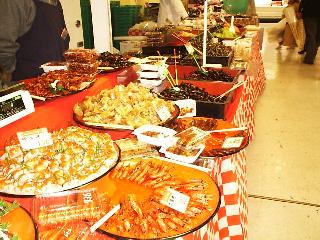
There are many kinds of Osechi for New Year's. Many are wildly expensive also--as you can see in one one the pictures-- 2000 yen for a small case of sweet black beans. Other dishes you can see look like goldfish on a stick, but aren't.
There are small shrimp strung together, various baked fish, sweet jams, fried foods, etc. In older times women slaved for several days to get everything done, but these days they just go to the supermarket and pay in blood.
The New Years Display
Many large stores also have large ornaments like these seen here. Three bamboo poles decorated with flowers and pines are very typical--but different regions of Japan have slightly different types of New Year's displays.
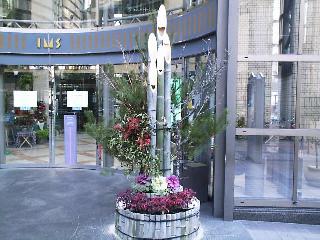
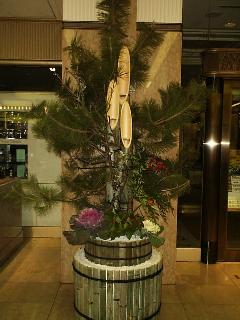
And here are some pics of a shrine on New Year's Day--
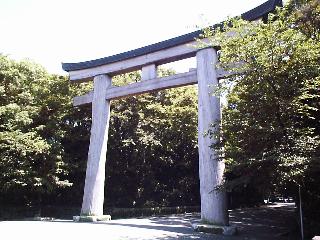
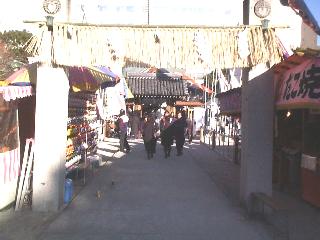
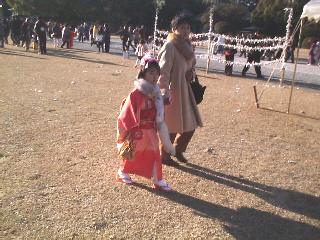
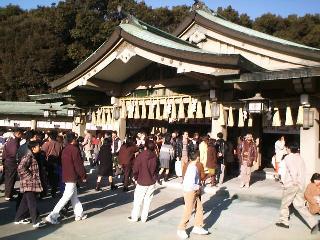
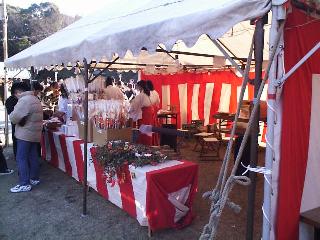
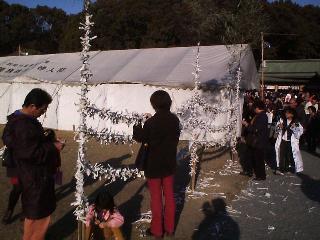
The Shinto Shrine is the only busy place you'll find on New Year's. Many people on the night of Dec. 31st go to a Buddhist temple to hear the 108 bongs of the bell, which are supposed to drive off the 108 sins of the human condition.
Traditionally, many visit 3 different shrines on New Year's, and a few actually stay up all night to do it and see the first sunrise of the year. It's about the only time that public transportation is running in the wee hours of the morning; normally they shut down before midnight.
Some of the more famous shrines will be jammed with people, as they go up to the altar and pray for health and prosperity for the coming year. It is also one of the few times that you can see some Japanese women in a traditional kimono. Japanese also receive Nenga-jo or New Year's Cards, and that is the only mail delivered on Jan. 1st. Some mail out several hundred cards to every acquaintance and business contact they have, much to the delight of the Post Office which makes many of yen from it.
Fireworks are generally not used, but this too due to the whoop-it-up atmosphere of the West is slowly changing, and in some more populated areas or amusement parks you can see some. You won't find any home fireworks on sale anywhere though, and if you want to light some up you had better buy them when they are on sale, during the summer usually until the end of August.

Seijin No Hi -- Coming of Age Day (January 8th)
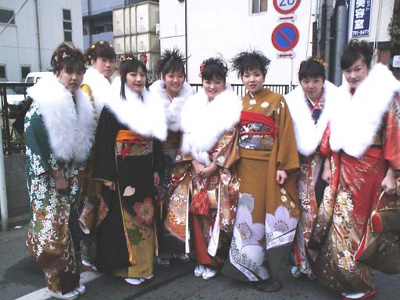
Seijin No Hi is the first holiday of the year after New Year's is all over. It is for all the women who have just become legal adults (age 20), and most families buy a kimono for their daughter. The typical kimono is 300-400 thousand yen, but much more extravagant kimono can be as high as a million yen each.
On Jan. 15th the young lady will typically go to a nearby Shinto Shrine and pray for health, success, money, etc. It's one of the few times you will see anyone wear a kimono - except for the grannies running around going to study or teach tea ceremony. The other occasions are graduation from a college, and once in a while at a wedding.

Valentine's Day
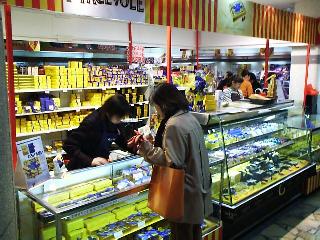
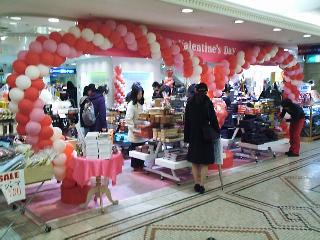
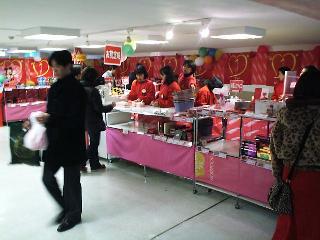
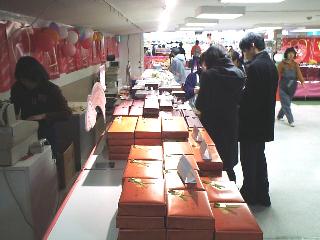
There's Valentine's Day here in Japan too. But not quite the same. In Japan, it's the girls who give the boys chocolate on Feb. 14th. And not just to someone they like. There is a uniquely Japanese characteristic of giving "Giri-Choko" -- giving chocolate to the men one would rather see skydiving without a parachute -- the boss, namely. "Giri" means obligation, but in Japan it has a deep sense of long-term commitment.
Since gift-giving is a common custom in Japan, many confectionary companies also try to push their own manufactured celebration, "White Day" on March 14th, where it's the boys turn to give the girls something. This attempt has been at best a limited success.
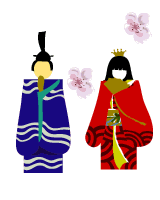

![]()
The Hina Matsuri or doll festival takes place on March 3rd every year. Its origins go back to China which had the custom of making a doll for the transferral of bad luck and impurities from the person, and then putting the doll in a river and forever ridding oneself of them. March 3rd celebrates Girls' Day in Japan, and from mid to late February families with daughters put out the dolls with the hopes their daughters will grow up healthy and happy.
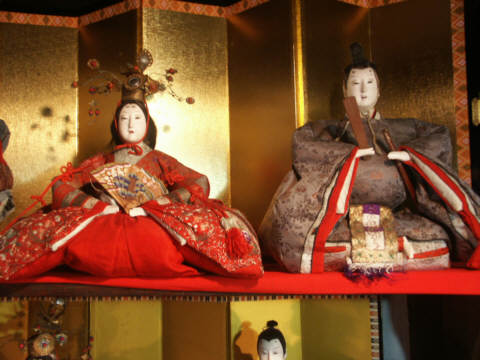
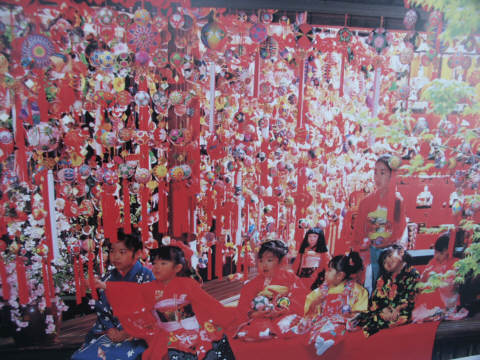
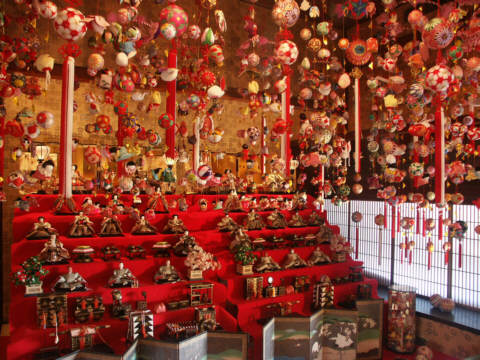
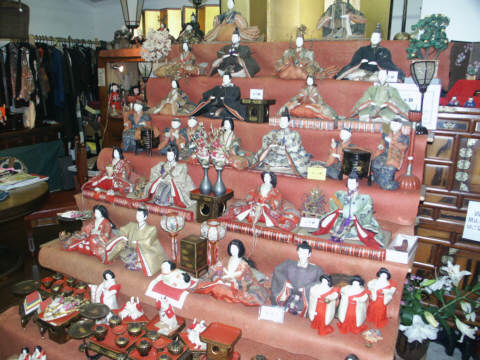


Cherry Blossoms
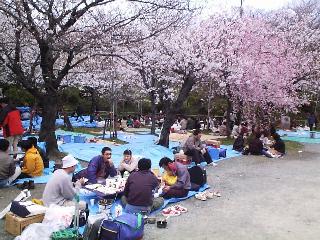
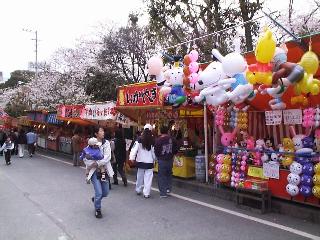
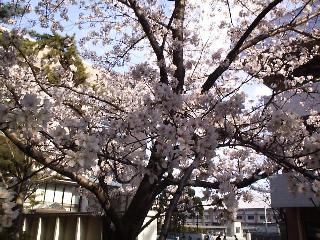
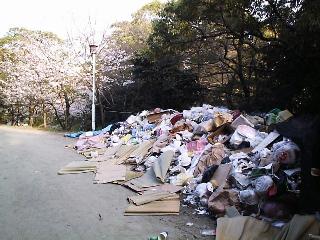
The coming of the cherry blossoms (sakura) is one of the happiest events in Japan . First and foremost it heralds the coming of spring, which is a delight since winters in Japan are bone-chilling cold. They also have a deeper cultural significance since they fall to the ground and disappear in only a couple of weeks (and even sooner if the frequent rains wash them all off the trees), which echoes an ancient cultural belief in the short, transitory nature of youth and life itself.
These photos show the flowers and how Japanese celebrate--the Hanami, or flower viewing. What this means of course is another bout of wild drinking parties under the trees, and karaoke going until the wee hours of the morning. Every city park with lots of sakura trees will be jammed with people, and finding a spot to even sit down may be impossible. The last photo as you can see is another example of Japanese "living in mystic harmony with nature" (be sure to pass this page's URL to all your goofy friends who view Japan with sakura-colored glasses).
The aftermath of all this is more than just a pretty carpet of sakura petals on the ground. Nevertheless, the sakura are truly a delight to behold, it means the end (or nearly the end, as mother-nature sometimes jumps the gun) to those horrendously freezing winter winds, and you haven't seen Japan until you've seen the beginning of spring.

The Shichi Go San Matsuri
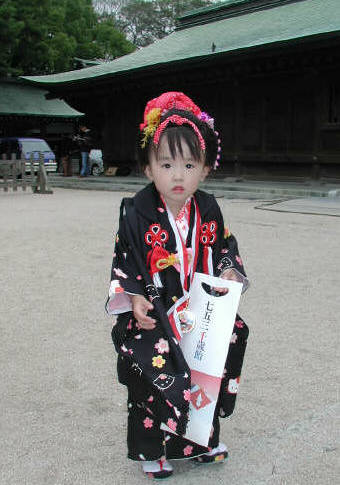
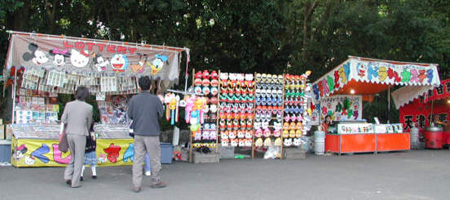
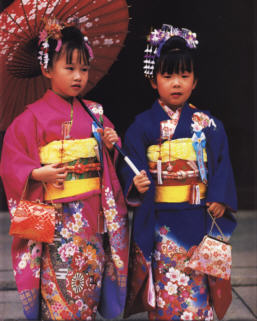
The Shichi Go San or 7-5-3 Festival is one of the uniquely Japanese festivals. Boys who are 3 and 5 years old, and girls who are 3 and 7 are taken to a shinto shrine, often in their first kimono, and the parents pray for their continuing good health and prosperity.
The numbers, especially 3 and 7, are lucky numbers in Japan, and until the 20th century Japan was a thoroughly feudal nation with a higher childhood mortality rate. Since bacterial pathology was then unknown to them they often blamed death on evil spirits, and when the kids became 3, 5, and 7 years old they thanked the gods for their children's good health.
A sweet candy called chitose-ame is also often bought for them, in a bag with cranes and turtles, 2 more symbols of long life. Other gifts are also given to them, as you can see some samples like the Japanese animation cat Doraemon.


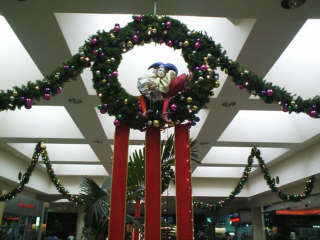
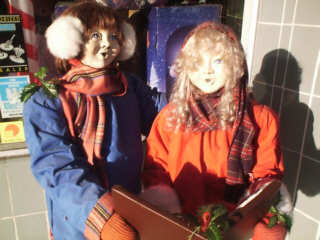
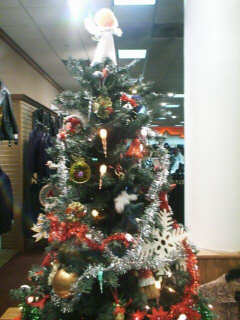
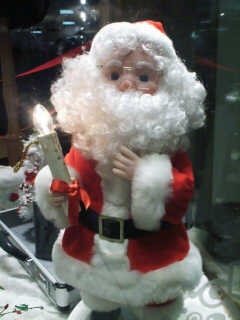
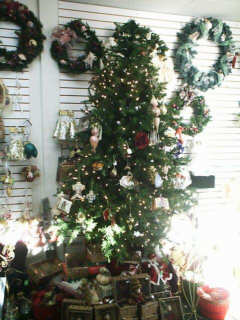
You might think in a country that's 99% non-Christian that Christmas would just blow on by and you'd never even realize it. But once again, you'd be completely wrong. Japanese department stores have decked-out trees as colourful as anything in the west, and many streets have colourful displays and wreathes all lined up for blocks. Still, it's time to set the record straight -- it's most certainly not as some dewey-eyed western writers put it "one day out of the year when all Japanese become Christians".
Christmas in Japan has nothing to do with religion at all . Then why is it popular? For one, exchanging gifts is a well recognized cultural trait and Xmas fits in nicely here. For another, the lights and glitter are pretty. But behind that you'll find very little else. In fact, when it comes to celebration, think Valentine's Day.
There is no big Xmas feast. Turkey is nowhere to be found, unless you want to pay a fortune to a mail-order company or one of the few department stores that carry them. Not much you could do even if you did have one, since for nearly all Japanese the only oven they have is a microwave or a toaster.
So given a choice of a turkey sandwich at Subway's in Tokyo or Osaka, many Japanese go to Kentucky Fried Chicken, where there are always some special Christmas chicken dishes. Expect to see a very long line into every KFC on Christmas Eve. Almost no Japanese have any Christmas trees either; their homes being cramped enough as it is.
Christmas Day is still a work day in Japan. There are quite a few parties though. The is the season for the "Bo-nenkai", or "Forget the Year Party", where many Japanese drink and forget the year's problems (and more than a few drink enough to forget more than that).
There is also writing Nenga-jo or New Year's Cards for Jan. 1st. And a few give chocolates or small gifts to boyfriends and such, however hark the herald angels sing won't be something you'll be feeling here. But if you like drinking a few glasses of Christmas cheer, Japan is certainly the place to be. The beer companies are extremely thankful for Christmas.
